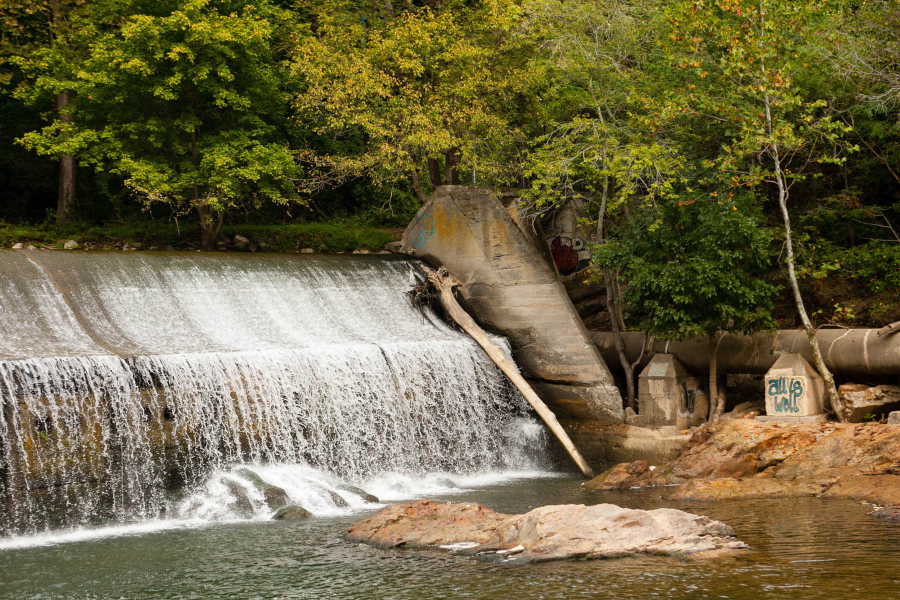Breaching Bloede Dam
Dam removal will eliminate danger for humans, improve habitat for wildlife

Today, Maryland’s Bloede dam was breached, freeing the Patapsco River for wildlife and human use.
Located on the Patapsco River near Catonsville, Md., Bloede Dam was originally constructed in 1906 as a hydro-electric dam supplying power to nearby towns. However, as hydropower became less important the generators went offline in the early 1920s, despite the dam’s innovative design.
The structure sat out of commission for most of the last century, deteriorating and suffering damage beyond reasonable repair. Most of the interior equipment has been removed, leaving only the 26-and-a-half-foot dam wall to block the river. The unmoderated flow over this has created dangerous water conditions, causing at least nine swimming- and fall-related deaths since the 1980s. Maryland Department of Natural Resources officials decided to remove the dam after estimates to bring the dam into safety compliance topped out over $1 million.
Furthermore, the height of the dam wall is an obstacle for migratory fish throughout the region. Multiple species of importance, including shad, herring and American eels have lifecycles that are split between freshwater in rivers of the watershed and saltier water of the Chesapeake Bay and the ocean. These migratory fish saw sharp declines in their populations when many dams were constructed around the turn of the century for use in industry. The dams block the movement of the fish from salt to freshwater and often disrupted access to spawning areas. Remnants of these dams throughout the region, most out of commission, continue to impact the populations of these species.
In an effort to help these species rebound, the Bay Program partnership committed to continually increase habitat to support migratory fish within the 2014 Chesapeake Bay Watershed Agreement. Specifically, the partnership would open 1,000 additional stream miles by 2025. To accomplish this, the Bay Program has been targeting dams for removal that block high quality habitat, such as Bloede.
Restoration efforts on the Patapsco River began in 2010 with the removal of Union Dam, followed by the removal of Simkins Dam in 2011. Partners including National Oceanic and Atmospheric Administration, U.S. Fish and Wildlife Service, the state of Maryland, American Rivers and National Fish and Wildlife Federation, have invested more than $8 million to take on a regional restoration effort. Restoring the Patapsco River and its surrounding area by removing the dams will increase movement of and provide better habitat for wildlife, while improving water quality and allowing recreational opportunities for residents.
Bloede is the most downstream of the Patapsco dams, and with its removal nine miles of the mainstem river and 65 miles of tributaries will be opened for fish migration, habitat and spawning. The removal project began in September 2017, but has been complicated by the relocation of a sewer line. The removal preparations culminate this week when the dam is breached. In the coming months when removal is complete, the project will also provide public access to the water including opportunities for fishing, swimming and paddling.
Learn more about the state of fish passage.

Comments
There are no comments.
Thank you!
Your comment has been received. Before it can be published, the comment will be reviewed by our team to ensure it adheres with our rules of engagement.
Back to recent stories